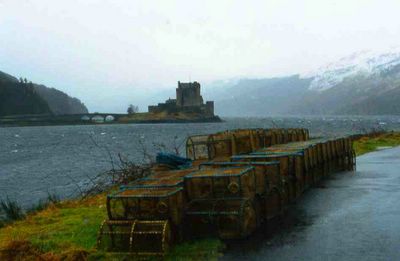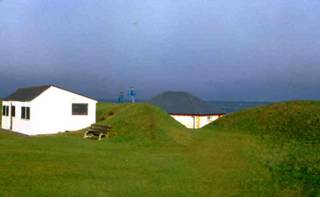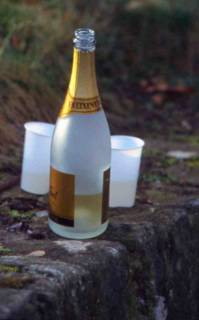
"Ummm, you know that God is your copilot, right, Javier? Not me. We’re straight on that?” Javier, our cool, calm and capable Island Air pilot looked at the airplane steering wheel I held in my sweaty hands and laughed. I was riding shotgun in a 10-seater Britten-Norman Islander, in the copilot’s seat, and the steering wheel in my lap and the windshield and instrument panel in my face made me a little nervous. I like adventure, but I hate danger.
This was one of those rare days when you get a retake – a chance to do something you missed doing well or at all on some previous day of your life. A few days prior, I’d landed on the tiny airstrip outside San Pedro on Belize’s Ambergris Cay. Our family had flown from Belize City in a plane so small I feared our mammoth family-suitcase-on-wheels might tip the craft’s delicate balance and land us all in the drink, where we’d swim with the manta rays and hope to find one or two to cling to until we were rescued (or eaten). As we disembarked at the shack that served as the San Pedro terminal, I noticed a sign offering Island Air tours to Tikal, Guatemala, arguably the most stunning of the Mayan world’s deep jungle ruins. I’d come close to Tikal once before, but never got there.
This was an unexpected gift. Years earlier, my sister and I had spent an on-the-edge week in Guatemala (landslides, volcanic eruptions, rain-soaked nighttime mountaintop evacuations – a future blog post…). God must have figured we’d had our fair share of adrenaline rushes, so he kept making it rain in Flores, Guatemala, the gateway to Tikal. Flores’ runway was dirt, so rain meant mud, and mud meant canceled flights from Guatemala City. Three days in a row. Then, time to fly back to the States. I’d been to Guatemala, but I hadn’t seen Tikal. Kept me up at night. Such a bummer. Such a void. Close, but no cigar.
Fast forward to a family beach vacation. A little outfit called Island Air tells me it will take me on a day trip from San Pedro Town, Belize to Tikal, Guatemala and back. I’m in.
I walked to the airstrip at 6:15 in the morning, and at seven o’clock, Javier guided the hummingbird-sized plane into the air, and we were off to Guatemala. There were four couples and me, so Javier and I became a couple by default. The others – two thirty-something Manhattan investment banker-ad exec twin sets, Danny and Chris from LA, and a German couple who said nothing but nodded a lot – laughed when I took the copilot seat, the only one left. The couples held hands and snuggled while I got up close and personal with an altimeter, heard every word spoken into Javier’s air traffic control headphones, and wrote my name in dust on the plane’s tiny, oh-so-screechingly-close-to-me dashboard.
As we flew over Belize City, Javier pointed to manatees swimming in the Belize River below. About a dozen beautiful, primal behemoths. I relaxed. Javier, I realized, was just like the transcontinental 747 pilot who announces, in that reassuring pilot voice, “Ladies and gentlemen, if you look out the right side of the aircraft, you’ll see Buffalo, Niagara Falls and Lake Ontario…” Javier knew his route, his country and his plane. My white knuckles regained a splash of color. I resolved to look at the flight to Tikal as a sightseeing adventure in its own right. And Javier made it so.
We flew over the Peten, one of earth’s last dense jungles. We eat them up so quickly now, that to see one from the air is to grasp its deep, green, life-giving importance. If only everyone could fly over a rainforest. As green things go, emeralds are nothing. Trees are everything.
Javier pointed again and spoke. The pack in the back were out of earshot, so I was the only one who followed his finger to the comb of an as yet unexcavated Mayan temple that poked through the Peten canopy a mile below and miles away. Such a moment. The whole of the dense Peten spread beneath us, and a lone Mayan temple reached, through the centuries, to the heavens. Something few have seen. Something I would never have seen without Javier.
We flew over the neat, lush Mennonite farms of northern Belize and over tiny Belmopan, Belize’s capital. Finally, Guatemala’s Lake Peten Itza spread blue below us, and Flores appeared, just the vision I’d imagined it would be. A remarkable sight from the air, Flores sits in the middle of the lake like a red-tiled circle of earth, crowned by a conquistador cathedral and connected to the shore by a causeway.
When day was done and we’d taken in Tikal with the help of our lame guide, Raoul – “the one with the stick,” to whom I’ll introduce you in another post – we hopped back into our Britten-Norman hummingbird. The couples took their places in the rear. Javier and I jumped up front. “Onward and upward, Javier!” He smiled and guided the plane down the runway and into the air.
Book proceeds to tsunami relief indefinitely. Details in Jan. 2 post






